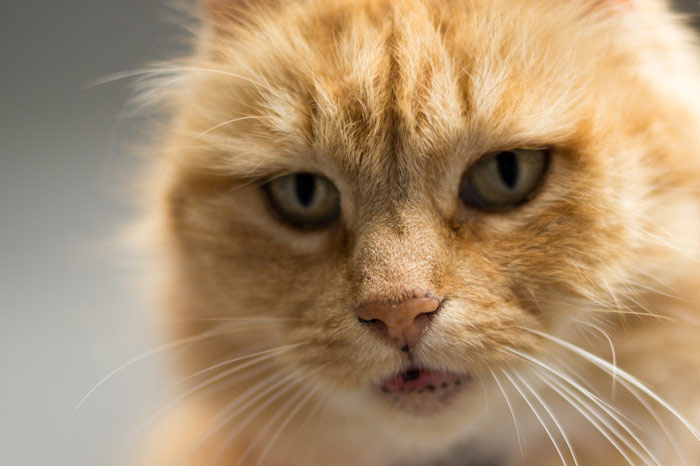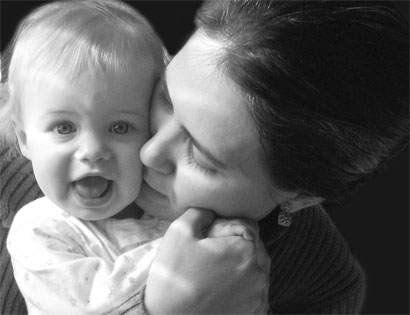Refusing without the word “no”: 10 ways how to do it
It’s no problem to say “no” to your toddler, but it is the best disciplinarian method? Try 10 alternative ones and see if it is better not to use the word “no.”
 Saying “no” every time you want to prevent your little one doing something or deny him his wish is not the only – and not the best – way to achieve your purpose. First, it becomes a routine tiresome for all the family members. Second, relying too much on “no” may lay the basis for resentment and a desire to protest when he has grown older. Third, “no” is a strong word, better used in situations that you regard as emergency ones, so it is worth your while not to diminish its meaning through frequent use. Here you will find ten sentences that make a good substitute and convey a clear refusal strongly and succinctly.
Saying “no” every time you want to prevent your little one doing something or deny him his wish is not the only – and not the best – way to achieve your purpose. First, it becomes a routine tiresome for all the family members. Second, relying too much on “no” may lay the basis for resentment and a desire to protest when he has grown older. Third, “no” is a strong word, better used in situations that you regard as emergency ones, so it is worth your while not to diminish its meaning through frequent use. Here you will find ten sentences that make a good substitute and convey a clear refusal strongly and succinctly.
“Yes, you are fond of ice-cream, but too much of it is bad.”
You will certainly want your toddler not to overindulge in junk food. How best to keep him away from candy and ice-cream? Offer them something healthy instead – some tasty yogurt, for instance. If you mean to put them off by promising to give them candy tomorrow, remind yourself that toddlers don’t have that good understanding of time, they feel what they want right now. The best bet, therefore, is to give them healthy food in a firm and kind manner – and see them enjoy it.
“You eat food, it is not for throwing.”
When a kid is not hungry, he looks upon the food placed before him as upon a toy. No wonder, then, that he pushes it about and eventually throws the bowl or its contents on the floor. There’s no need to yell at him. Pick up the bowl and explain that food is not meant to be thrown. Do it calmly and seriously. The next time when he treats food properly, praise him for understanding the meaning of food. Likewise, his bed is not for jumping on, but for enjoying a nice nap and relaxing. Put him firmly on the right path without outwardly denying him his fun.
“Legos are for playing, not for knocking down. Let’s play with them.”
Your toddler likes to knock down his big brother’s Lego buildings? It certainly can be out of jealousy of his ability to do things denied to the little one – but the answer may be even simpler: he finds it fun to see the tower fall down. Children don’t like to be pointed out that they should do this and shouldn’t do that, some of them really hate it. So you offer something different: loud reflections on what the toddler may want or how he feels about it. He realizes that he gets the parent’s attention and his activity is watched and understood – the more so if you join in and explain to him the right way to enjoy playing with Legos.
“Be gentle with animals and plants, they feel pain.”
The kid amuses himself by pulling petals off your flowers or mistreating the pet? Explain to him that animals and plants are living things and he is hurting them. The pet and the flower have feelings that get hurt, too, besides, pain hinders their growth. This way the child develops empathy and begins to grasp the essence of living. It is also an excellent time to teach him responsible attitude to nature through being duly mindful to animals and plants he comes across in his home.
“We communicate our feelings with words, not with hands and feet.”
It is a more sophisticated way of saying “Don’t kick other children.” The toddler’s understanding of hitting and inflicting pain is not yet up to our mark. So the parent should stop the act of aggression at once and comment on the misbehavior in a calm voice, saying that we don’t hit out when we get angry. The kid often does that when he is frustrated or wants attention. If siblings fight, get them to hug developing a warm relationship. Let the angry child calm down and then ask them to explain what made them angry and what they may be wanting. They need to learn to discuss their frustrations. Also, you can help the child learn to identify his emotions and, having done that, do on discussing what can be done to resolve the issue.
“I don’t understand your whining, can you repeat that more calmly?”
Protestations and demands are often made loudly or in a whining tone. Of course, you can ask the toddler to cut whining and say that good children never whine. But there are easier ways to get your point across. You can tell your kid that you don’t understand what he wants when he uses this kind of tone. Try and get him to express his wants in a natural voice. He will understand that by speaking normally he can get himself heard and reacted to better. The toddler starts to realize he can choose how to communicate with his parents not only in the matter of voice.
“Mom’s going to get you, run quickly!”
Misbehavior shouldn’t be so closely linked to punishment, for there are other means that can be used in disciplining successfully. Excellent results can be achieved by employing laughter and distraction. Toddlers respond to them gladly, even if they are fretful or obstinate. You know that if your little one is fond of laughing you can divert him by playing a fun trick on him and thereby making him more ready to cooperate with you. You can start to tickle him or pull funny faces to distract him from whatever harm he can be doing. If he plays with his ball in the wrong part of the house, invent a chasing game to take him to a room where he can throw the ball safely or get involved in other games.
“Can mom get her phone back? Here’s a toy for you to play with.”
Stopping a behavior is a more difficult task than adjusting it – your kid can be tricked into doing the same thing differently. He is attracted to your iPhone when it rings, but you don’t want him playing with it. If he managed to get hold of the phone, exchange it for an attractive toy. If you can’t get hold of a suitable toy, give him a small safe object that can’t be eaten or taken apart (creating a mess all over the place). By the way, this is a good opportunity to teach them the purpose of various objects.
“We will take off our shoes when we get home, so keep them on for now.”
While the child is getting used to shoes, he can start playing with them taking them off whenever he feels like doing it. Trying to stop him from “playing with shoes” can prove more difficult than instructing him calmly about the proper way to handle his footwear. The same goes when toddlers want to put on clothes not suitable for the occasion. Employ comments like “it is better not to wear your bathing suit now – it is for the beach” or, if he wants to stand on furniture, point out that it is much more comfortable to sit on the chairs instead of standing.
“It’s hot!” or “It’s dangerous!”
By shouting “no” we don’t offer enough information about a possibly dangerous situation. If you feel that the situation requires an urgent approach, use words that explain the danger clearly said in a suitably urgent voice. Your message about an unordinary circumstance should be as effective as possible, giving warning by well-selected words, by the tone of voice and by gestures or facial expressions at once. As your toddler reaches out for a hot object, imitate fear, call out to him with every expression of alarm and get him away from the danger at once.





